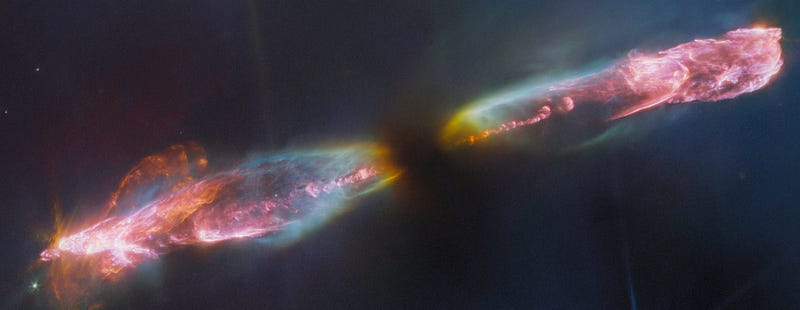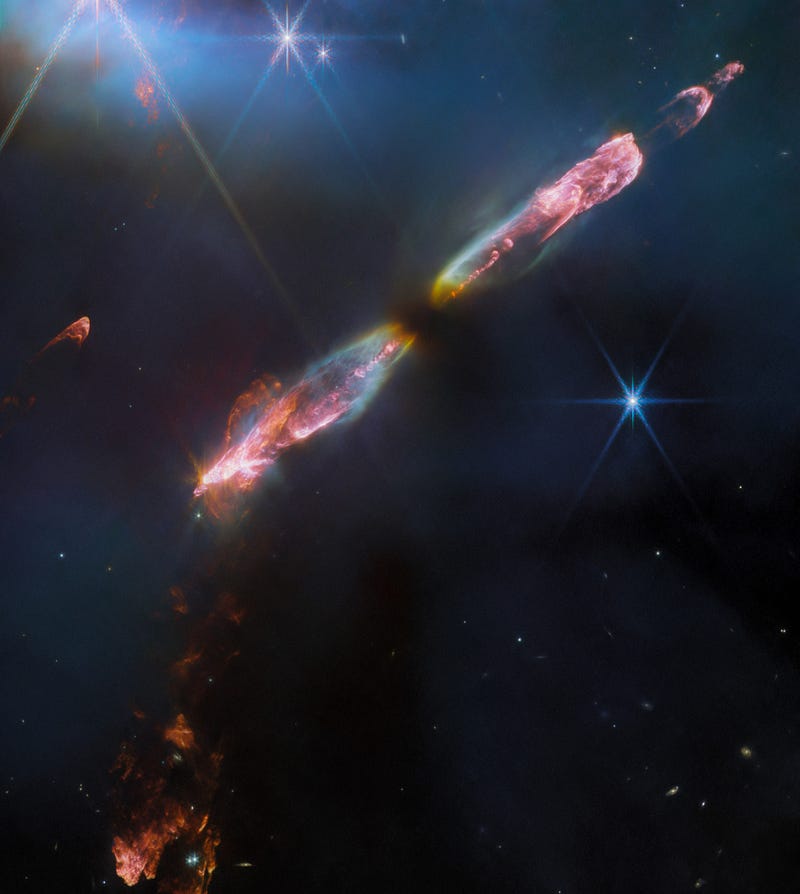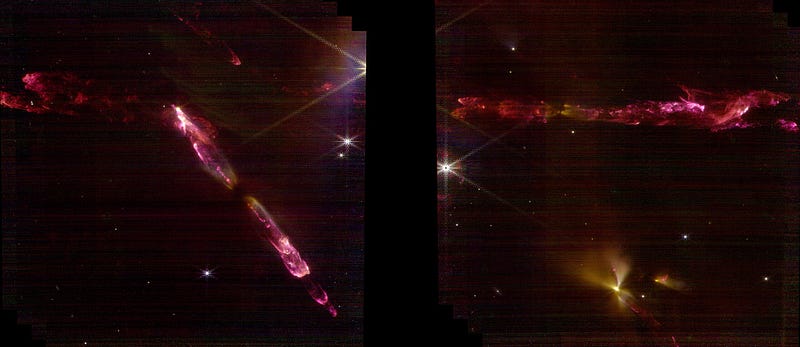Unveiling the Mysteries of the James Webb Space Telescope
Written on
Chapter 1: A Glimpse into Stellar Birth
Witness the extraordinary sights provided by the James Webb Space Telescope, which has captured striking jets of plasma racing at incredible speeds. These energetic streams originate from a nascent star that has the potential to become as massive as our Sun.

[Photo: ESA/Webb, NASA, CSA, T. Ray (Dublin Institute for Advanced Studies), CC BY 4.0, via Wikimedia Commons]
Stellar nurseries, where new stars are born, are among the most visually stunning regions in the cosmos. In these star-forming areas, phenomena such as Herbig-Haro objects become apparent—glowing regions surrounding young stars. These objects arise when jets are expelled from a star's poles, sending streams of plasma hurtling through space at high velocities, generating shockwaves that disturb the surrounding clouds of dust and gas.
The resulting visual displays are captivating. Herbig-Haro objects can manifest as vibrant clouds or streaks that span vast astronomical distances. The latest instance of such a phenomenon was recorded by the James Webb Space Telescope. The released image reveals a structure reminiscent of a double-edged lightsaber, known as Herbig-Haro 211 (HH 211), situated in the Pegasus constellation.
This object is located approximately 1,000 light-years from Earth, emanating from a very young star that remains invisible in infrared wavelengths. Positioned between two jets traveling in opposite directions, this class 0 star has yet to undergo nuclear fusion. It will "ignite" once it gains sufficient mass.
Scientists estimate that this star's characteristics are akin to those of our Sun during its early developmental phase. Currently, it is believed to possess only about 8% of the Sun's mass. A surrounding cloud of material continues to accumulate around it, gradually increasing its mass as two jets expel material into the interstellar medium, resulting in a visually stunning display captured by the Webb Telescope.

[Photo: ESA/Webb, NASA, CSA, T. Ray (Dublin Institute for Advanced Studies), CC BY 4.0, via Wikimedia Commons]
Section 1.1: Composition of the Jets
Herbig-Haro 211 consists of carbon monoxide, silicon monoxide, and molecular hydrogen, which are responsible for the infrared radiation detected by the Webb Telescope. The captured image showcases both the jets and the shockwaves they produce. Notably, the jets are symmetrically positioned on either side of the star, hinting at the possibility of a binary system. Research indicates that around 80% of Herbig-Haro objects originate from binary or multiple star systems.
The velocity of the jets, measured at the closest point to the star, ranges from 80 to 100 km/s, gradually decreasing as they travel further. This lower speed, compared to jets from older and more massive stars, helps explain why the material in HH 211 is composed of molecules rather than atoms. The shockwaves generated are insufficiently powerful to dissociate molecules into their atomic components.

[Photo: Meli thev, CC BY-SA 4.0, via Wikimedia Commons]
Section 1.2: The Transience of Herbig-Haro Objects
How long will this "lightsaber" produced by the unseen star linger in our celestial view? Certainly not for long, at least in cosmic terms. Herbig-Haro objects typically exist for just a few thousand years. During their brief lifespan, their appearance can evolve significantly.
As these objects distance themselves from their parent star, their brightness may fluctuate over a few years, with some areas becoming more pronounced while others fade away. This suggests that future observations of HH 211 will remain as intriguing as the current ones.
The sources of these dynamic phenomena, class 0 stars, emit jets in concentrated beams, not in a continuous flow but in pulses. This pulsing behavior further disrupts the interstellar medium and produces unique light effects, as vividly captured in images by the Webb Telescope.
Chapter 2: Remarkable Discoveries Beyond the Cosmos
In a related discussion, Bill Nye explores the James Webb Telescope's latest discovery of a startling object in space, emphasizing the significance of these observations in understanding our universe.
Dear Readers
I wish to address an important matter affecting content creators like myself on Medium.com. The rewards for our hard work are often minimal, even though we dedicate ourselves to producing valuable content. If you appreciate my articles, please consider supporting me on my “Buy Me a Coffee” page. Your contributions, regardless of size, can inspire me to keep creating engaging and thought-provoking material. Thank you for being a part of this journey!

